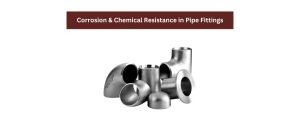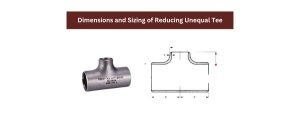In the world of pipe fittings, elbows play a critical role in ensuring the efficient flow of fluids and gases in piping systems. Two commonly used types of elbows are the 3D Elbow and 5D Elbow. These terms refer to the radius of curvature of the elbow relative to the pipe’s nominal diameter. But how do they differ, and which one should you choose for your application? Let’s explore the distinctions between 3D and 5D elbows to help you make an informed decision.
What is a 3D Elbow?
A 3D Elbow is a pipe fitting with a radius of curvature that is three times the nominal diameter (D) of the pipe. It is primarily used in systems requiring compact layouts, where space is limited, but a change in direction is necessary.
Key Features of 3D Elbow:
- Compact Design: Ideal for tight spaces where the piping system requires sharp directional changes.
- Applications: Frequently used in industries like plumbing, HVAC, and small-scale process piping.
- Flow Characteristics: Moderate resistance to fluid or gas flow due to its sharper curve.
- Cost-Effective: Generally more affordable than 5D elbows, making them a practical choice for budget-conscious projects.
What is a 5D Elbow?
A 5D Elbow, on the other hand, has a radius of curvature five times the nominal diameter of the pipe. These elbows are designed for applications where smoother flow and reduced pressure drop are critical.
Key Features of 5D Elbow:
- Smooth Flow: The larger radius minimizes turbulence and ensures a steady flow of fluids or gases.
- Applications: Commonly used in industries such as petrochemical, oil and gas, and power generation, where flow efficiency is crucial.
- Durability: The longer radius reduces wear and tear, making it ideal for systems with high-pressure or high-velocity conditions.
- Cost and Space Requirements: Generally more expensive and requires more installation space compared to 3D elbows.
Differences Between 3D Elbow and 5D Elbow
| Aspect | 3D Elbow | 5D Elbow |
|---|---|---|
| Radius of Curvature | 3 times the pipe’s diameter | 5 times the pipe’s diameter |
| Flow Resistance | Higher due to a sharper curve | Lower due to a gentler curve |
| Applications | Compact systems, lower flow efficiency | Systems requiring smoother flow |
| Cost | More affordable | More expensive |
| Space Requirement | Requires less space | Needs more installation space |
How to Choose Between a 3D Elbow and 5D Elbow?
The choice between a 3D Elbow and a 5D Elbow depends on the specific requirements of your project:
- Space Availability: If space is constrained, a 3D elbow is the better choice.
- Flow Requirements: For smoother flow and reduced pressure drop, opt for a 5D elbow.
- Cost: If budget constraints are a concern, a 3D elbow may be more suitable.
- Industry Application: Evaluate the industry-specific needs, such as high-pressure environments or long-term durability.
Applications of 3D and 5D Elbows
3D Elbow Applications:
- Plumbing systems
- HVAC pipelines
- Small-scale industrial processes
5D Elbow Applications:
- Oil and gas pipelines
- Petrochemical plants
- Power generation systems
- Large-scale industrial piping
Conclusion
Both 3D Elbows and 5D Elbows have their unique advantages and are suitable for different applications. The 3D elbow is compact and cost-effective, making it ideal for space-constrained projects, while the 5D elbow offers superior flow characteristics and durability for demanding applications. By understanding the differences and assessing your specific needs, you can make the right choice for your piping system.







